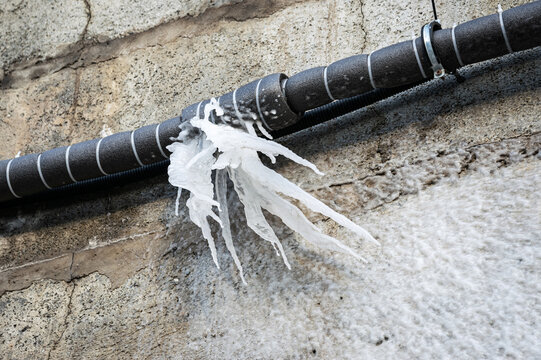How to Protect Your Plumbing from Freezing: Key Advice
How to Protect Your Plumbing from Freezing: Key Advice
Blog Article
On this page down the page yow will discover a bunch of quality advice pertaining to 6 Ways to Prevent Frozen Pipes.

Winter can ruin your plumbing, specifically by freezing pipelines. Here's exactly how to avoid it from taking place and what to do if it does.
Intro
As temperatures decrease, the danger of icy pipelines boosts, possibly causing pricey fixings and water damages. Comprehending exactly how to avoid frozen pipelines is essential for property owners in cold environments.
Avoidance Tips
Protecting vulnerable pipelines
Wrap pipes in insulation sleeves or make use of heat tape to secure them from freezing temperatures. Concentrate on pipelines in unheated or external areas of the home.
Heating methods
Keep indoor areas properly heated, especially areas with plumbing. Open up closet doors to enable cozy air to distribute around pipelines under sinks.
Exactly how to recognize frozen pipes
Seek decreased water flow from taps, uncommon smells or noises from pipes, and visible frost on subjected pipelines.
Long-Term Solutions
Architectural adjustments
Think about rerouting pipes away from exterior walls or unheated locations. Include added insulation to attic rooms, cellars, and crawl spaces.
Updating insulation
Buy high-quality insulation for pipes, attic rooms, and wall surfaces. Correct insulation assists maintain consistent temperatures and reduces the threat of frozen pipes.
Shielding Outdoor Pipes
Yard pipes and exterior taps
Detach and drain garden tubes before winter. Install frost-proof spigots or cover outdoor taps with shielded caps.
Understanding Frozen Pipelines
What triggers pipelines to freeze?
Pipelines ice up when exposed to temperature levels listed below 32 ° F (0 ° C) for extended periods. As water inside the pipelines ices up, it increases, putting pressure on the pipe walls and potentially triggering them to break.
Threats and problems
Icy pipelines can lead to water system interruptions, residential or commercial property damage, and expensive repair work. Burst pipes can flood homes and cause considerable architectural damage.
Signs of Frozen Piping
Recognizing frozen pipelines early can avoid them from bursting.
What to Do If Your Pipelines Freeze
Immediate actions to take
If you think icy pipes, maintain faucets open up to soothe stress as the ice melts. Make use of a hairdryer or towels soaked in warm water to thaw pipelines gradually.
Conclusion
Preventing frozen pipes needs positive steps and fast feedbacks. By comprehending the causes, indications, and safety nets, homeowners can secure their pipes throughout cold weather.
5 Ways to Prevent Frozen Pipes
Drain Outdoor Faucets and Disconnect Hoses
First, close the shut-off valve that controls the flow of water in the pipe to your outdoor faucet. Then, head outside to disconnect and drain your hose and open the outdoor faucet to allow the water to completely drain out of the line. Turn off the faucet when done. Finally, head back to the shut-off valve and drain the remaining water inside the pipe into a bucket or container. Additionally, if you have a home irrigation system, you should consider hiring an expert to clear the system of water each year.
Insulate Pipes
One of the best and most cost-effective methods for preventing frozen water pipes is to wrap your pipes with insulation. This is especially important for areas in your home that aren’t exposed to heat, such as an attic. We suggest using foam sleeves, which can typically be found at your local hardware store.
Keep Heat Running at 65
Your pipes are located inside your walls, and the temperature there is much colder than the rest of the house. To prevent your pipes from freezing, The Insurance Information Institute suggests that you keep your home heated to at least 65 degrees, even when traveling. You may want to invest in smart devices that can keep an eye on the temperature in your home while you’re away.
Leave Water Dripping
Moving water — even a small trickle — can prevent ice from forming inside your pipes. When freezing temps are imminent, start a drip of water from all faucets that serve exposed pipes. Leaving a few faucets running will also help relieve pressure inside the pipes and help prevent a rupture if the water inside freezes.
Open Cupboard Doors
Warm your kitchen and bathroom pipes by opening cupboards and vanities. You should also leave your interior doors ajar to help warm air circulate evenly throughout your home.

Do you really like reading about How to prepare your home plumbing for winter weather? Put feedback down the page. We'd be happy to know your suggestions about this piece. Hoping to see you back again in the near future. Do you know somebody else who is looking into Preventing and dealing with frozen pipes? Do not hesitate to share it. Thanks for your time. Kindly come by our blog back soon.
Visit Website Report this page